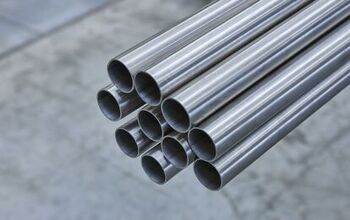Can You Use Copper Pipe For Natural Gas?

In many areas of the country, natural gas is the fuel of choice for home heating, water heating. Natural gas is supplied to entire neighborhoods and high-rise apartments through intricate pipes and pump stations. However, significant safety issues surround the plumbing of the natural as supply to your home. Using copper pipe comes up often and is not as simple a question as you might think.
Copper pipe has been used to deliver natural gas into homes for many years. The acceptance of copper pipes by building codes varies widely. In some locations, buildings code strictly prohibits using copper pipe for home natural gas systems. In other regions, using copper pipe is the de facto standard. Local building codes are the source of the correct answer.
There are many generalizations about using copper pipe to deliver natural gas on the internet. In truth, the only reliable source of what is legal and accepted in your area is to visit the local building codes and inspections department. Licensed plumbers are another reliable source of information about what kind of pipe is allowable for natural gas.
Do You Need a Faucet, Fixture, or Pipe Repair or Replacement?
Get free, zero-commitment quotes from pro contractors near you.

Why Do Some Building Codes Forbid Copper Pipe for Natural Gas?
The natural gas delivered to your home is mostly methane. However, all natural gas contains an array of other gases. In addition, natural as tends to be odorless and colorless. Many gas companies mix an odorant with natural gas to make leaks more easily detected.
Natural gas does not typically corrode copper pipes. However, some of the naturally occurring compounds that may be mixed with the methane can cause corrosion problems with copper pipe. One naturally occurring gas, hydrogen sulfide, can cause the copper pipe to degrade and leak over time.
To forestall problems with gas leaks, fires, and explosions, many cities and counties prohibited the use of copper pipe to carry natural gas. In many jurisdictions, only black pipe was acceptable for plumbing natural gas inside a residential structure.
What do the Major Building Codes Say About Copper Pipe Now?
The Uniform Plumbing code forms the basis for most local building plumbing codes in the United States. Before 2000, the UPC did not allow copper pipe to be installed to deliver natural gas. However, in 2000, the IAPMA voted to change the UPC to allow copper pipe for natural gas delivery systems in some circumstances.
The most important exception included in the UPC is the proportion of hydrogen sulfide in the natural gas being delivered by the utility company. The UPC expressly forbids the use of copper pipe where the natural gas contains more than 0.3 parts per million of hydrogen sulfide.
Most jurisdictions are amending their building codes to track closely with the recommendations of the UPC. In some areas of the country, copper pipe is being actively promoted in natural gas delivery systems?
If I don’t Use Copper Pipe, What is the Best Piping for Natural Gas?
The overall consensus of many plumbers and pipefitters is that the best pipe for natural gas delivery systems is black iron pipe or galvanized pipe. Iron pipe and galvanized pipe are strong and rigid pipes that resist corrosion and are not easily damaged.
The major downside of installing black iron pipe or galvanized pipe is the labor involved. These types of pipe must be cut and threaded during installation. These processes take skill and special tools. Installing a black iron pipe natural gas delivery system usually takes much longer. Copper is much quicker and cheaper to install using soldered joints or flared fittings.
Can I Use Plastic Pipe to Plumb My Natural Gas Service?
You can use certain types of polyethylene pipe to connect the natural gas service from your meter to your home. This kind of installation is approved for underground burial only. The polyethylene pipe must, under most codes, exit the ground in a riser that encloses and protects the polyethylene pipe.
Plastic, Polyethylene, and PVC pipe are not approved or suitable for running natural gas service inside your home. In most jurisdictions, if you run a new or replacement gas service line from the gas meter to your home, you probably need a permit. Most jurisdictions require the installation to be performed and tested by a licensed plumber before the installation approval.
Can I Use Regular Coil Copper Pipe to Run Natural Gas in my Home?
There are specifications on the types of copper pipe that can be used to plumb natural gass delivery systems in most jurisdictions. In general, soft coil copper pipe is not acceptable in most building codes. The two most common types of copper pipe approved for running natural gas delivery systems are types K and L copper tubing.
The wall thickness is the major difference in type K and type L copper tubing. Type K copper tubing has the thickest wall and is considered the most durable. Both types of copper tubing are available in rigid and flexible forms and can be used with compression or flared fittings. Type L copper tubing can also be joined using sweated joints.
Lined Copper Tubing May be Required
Some jurisdictions allow copper pipe for installing natural gas supply lines. However, these building codes may stipulate that the copper tubing be lined to prevent corrosion. Several different types of linings are available for this purpose. Check with your building inspection department to understand the local requirements for natural gas supply systems.
Is Yellow Flexible Gas Line Legal?
Many homes built during the 1990s and into the 2000s have yellow corrugated flexible gas lines connecting the black iron pipe to your HVAC system or water heater. These yellow flexible tubes are called CSST, which stands for corrugated stainless steel tubing.
These flexible gas lines are economical and efficient ways to connect your appliances to the pipe that delivers your natural gas. It is uncommon to find black iron pipe or galvanized steel pipe plumbed to your appliances. There are several reasons for this.
- Plumbing black iron pipe or galvanized pipe to an appliance can be expensive and time-consuming. Fitting these rigid types of pipe to the location of the gas connection on the appliance can be tricky in some instances.
- HVAC systems and water heaters are often changed during the lifetime of the home. New appliances rarely have gas connections in exactly the same place as the old appliance. Replumbing rigid pipe can add expense to upgrading your gas-fired appliances.
Using CSST tubing to make the jump from the rigid gas service line to the appliance makes the installation quick and relatively inexpensive. However, cost and time are one thing. There is another factor to consider if you choose to use flexible CSST tubing.
The Downside of using Yellow Flexible Tubing (CSST) to Connect Your Gas Appliances.
Like many other things, CSST tubing is safe to use if properly installed. CSST tubing must be grounded or bonded to protect the pipe against lightning strikes. Lighting can have a devastating effect on CSST tubing.
The stainless steel used in CSST tubing is about .2mm or the thickness of two sheets of paper. The traditional black iron pipe has walls that are 4mm thick. If a lightning strike occurs, the electricity can flow through the natural gas piping as it goes to ground.
The electricity flowing down the natural gas piping can puncture the thin-walled CSST pipe. The sparks and heat generated by the lightning strike can ignite the natural gas with catastrophic effects in your home.
Can I Install My Own Natural Gas Lines?
Under most building codes, it is perfectly legal for a homeowner to perform construction on their own home. Most jurisdictions still require the homeowner to take out a permit to some portions of the work. Before you begin any construction work on your home, check with the building and codes department to learn more about their requirements.
Most building codes require that a shut-in test be performed when the installation is complete. This usually requires hiring some licensed by the City or County to perform such tests. The test involves closing all the valves in the system and putting air pressure on the pipes. The pipes must remain under pressure for a specified time to prove that the new or repaired plumbing has no leaks.
In most cases, we have found that the amount of money you save by installing or repairing natural gas lines is minimal. We recommend that you hire a licensed plumber to perform this work.
Can Copper Pipe Be Used with Propane Gas?
In rural areas, natural gas or LP gas may not be available. Most homeowners in these areas rely on propane for their gas-fueled appliances. Typically, the home has a large above-ground storage tank that holds and supplies the fuel to the house.
Copper pipe can be used to deliver the propane gas to the home. This is the usual method of installing a delivery system for propane in rural areas. Propane is not natural gas. Since propane is manufactured, it does not have the impurities and different compounds found in natural gas. This makes it safe to use with copper tubing.
Do You Need a Faucet, Fixture, or Pipe Repair or Replacement?
Get free, zero-commitment quotes from pro contractors near you.

Copper Pipe and Natural Gas – No Simple Answer
As with many things, the answer is that it depends. Using copper pipe in a natural gas delivery system is governed by local building codes and varies widely across the country. The only sure way to know what is allowable is to visit your local building code officials.

Dennis is a retired firefighter with an extensive background in construction, home improvement, and remodeling. He worked in the trades part-time while serving as an active firefighter. On his retirement, he started a remodeling and home repair business, which he ran for several years.
More by Dennis Howard



























